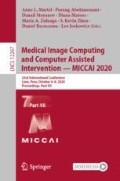Abstract
Graph theory has been used extensively to investigate information exchange efficiency among brain regions represented as graph nodes. In this work, we propose a new metric to measure how the brain network is robust or resilient to any attack on its nodes and edges. The metric measures redundancy in the sense that it calculates the minimum number of independent, not necessarily shortest, paths between every pair of nodes. We adopt this metric for characterizing (i) the redundancy of time-varying brain networks, i.e., chronnectomes, computed along the progression of Alzheimer’s disease (AD), including early mild cognitive impairment (EMCI), and (ii) changes in progressive MCI compared to stable MCI by calculating the probabilities of having at least 2 (or 3) independent paths between every pair of brain regions in a short period of time. Finally, we design a learning-based early AD detection framework, coined “REdundancy Analysis of Dynamic functional connectivity for Disease Diagnosis (READ\(^3\))”, and show its superiority over other AD early detection methods. With the ability to measure dynamic resilience and robustness of brain networks, the metric is complementary to the commonly used “cost-efficiency” in brain network analysis.
This work is supported by NIH grants EB022880, AG041721, AG042599 and AG049371.
Access this chapter
Tax calculation will be finalised at checkout
Purchases are for personal use only
References
Sporns, O.: Structure and function of complex brain networks. Dialogues Clin. Neurosci. 15(3), 247 (2013)
Dai, Z., et al.: Disrupted structural and functional brain networks in Alzheimer’s disease. Neurobiol. Aging 75, 71–82 (2019)
Adeli, H., Ghosh-Dastidar, S., Dadmehr, N.: Alzheimer’s disease and models of computation: Imaging, classification, and neural models. J. Alzheimers Dis. 7(3), 187–199 (2005)
Gauthier, S., et al.: Mild cognitive impairment. Lancet 367(9518), 1262–1270 (2006)
Calhoun, V.D., Miller, R., Pearlson, G., Adalı, T.: The chronnectome: time-varying connectivity networks as the next frontier in fMRI data discovery. Neuron 84(2), 262–274 (2014)
Allen, E.A., Damaraju, E., Plis, S.M., Erhardt, E.B., Eichele, T., Calhoun, V.D.: Tracking whole-brain connectivity dynamics in the resting state. Cereb. Cortex 24(3), 663–676 (2014)
Binnewijzend, M.A., et al.: Resting-state fMRI changes in Alzheimer’s disease and mild cognitive impairment. Neurobiol. Aging 33(9), 2018–2028 (2012)
Meier, J., Tewarie, P., Van Mieghem, P.: The union of shortest path trees of functional brain networks. Brain Connectivity 5(9), 575–581 (2015)
Newman, M.E.: Modularity and community structure in networks. Proc. Natl. Acad. Sci. 103(23), 8577–8582 (2006)
Ravasz, E., Barabási, A.L.: Hierarchical organization in complex networks. Phys. Rev. E 67(2), 026112 (2003)
Achard, S., Salvador, R., Whitcher, B., Suckling, J., Bullmore, E.: A resilient, low-frequency, small-world human brain functional network with highly connected association cortical hubs. J. Neurosci. 26(1), 63–72 (2006)
Dennis, E.L., Thompson, P.M.: Functional brain connectivity using fMRI in aging and Alzheimer’s disease. Neuropsychol. Rev. 24(1), 49–62 (2014)
Stam, C.J., Jones, B., Nolte, G., Breakspear, M., Scheltens, P.: Small-world networks and functional connectivity in Alzheimer’s disease. Cereb. Cortex 17(1), 92–99 (2006)
Jie, B., Liu, M., Zhang, D., Shen, D.: Sub-network kernels for measuring similarity of brain connectivity networks in disease diagnosis. IEEE Trans. Image Process. 27(5), 2340–2353 (2018)
Williams, N.J., Daly, I., Nasuto, S.: Markov model-based method to analyse time-varying networks in EEG task-related data. Front. Comput. Neurosci. 12, 76 (2018)
Jack Jr., C.R., et al.: The Alzheimer’s disease neuroimaging initiative (ADNI): MRI methods. J. Magn. Reson. Imaging 27(4), 685–691 (2008)
Chao-Gan, Y., Yu-Feng, Z.: DPARSF: a MATLAB toolbox for “pipeline” data analysis of resting-state fMRI. Front. Syst. Neurosci. 4 (2010)
Cox, R.W.: AFNI: software for analysis and visualization of functional magnetic resonance neuroimages. Comput. Biomed. Res. 29(3), 162–173 (1996)
Chen, X., Zhang, H., Zhang, L., Shen, C., Lee, S.W., Shen, D.: Extraction of dynamic functional connectivity from brain grey matter and white matter for MCI classification. Hum. Brain Mapp. 38(10), 5019–5034 (2017)
Shen, X., Tokoglu, F., Papademetris, X., Constable, R.T.: Groupwise whole-brain parcellation from resting-state fMRI data for network node identification. NeuroImage 82, 403–415 (2013)
Leonardi, N., Van De Ville, D.: On spurious and real fluctuations of dynamic functional connectivity during rest. NeuroImage 104, 430–436 (2015)
Petersen, R.C.: Mild cognitive impairment as a diagnostic entity. J. Intern. Med. 256(3), 183–194 (2004)
Petersen, R.C., et al.: Current concepts in mild cognitive impairment. Arch. Neurol. 58(12), 1985–1992 (2001)
Frank, E., Hall, M., Trigg, L., Holmes, G., Witten, I.H.: Data mining in bioinformatics using weka. Bioinformatics 20(15), 2479–2481 (2004)
Chen, X., Zhang, H., Gao, Y., Wee, C.Y., Li, G., Shen, D.: Alzheimer’s disease neuroimaging initiative: high-order resting-state functional connectivity network for MCI classification. Hum. Brain Mapp. 37(9), 3282–3296 (2016)
Author information
Authors and Affiliations
Corresponding author
Editor information
Editors and Affiliations
1 Electronic supplementary material
Below is the link to the electronic supplementary material.
Rights and permissions
Copyright information
© 2020 Springer Nature Switzerland AG
About this paper
Cite this paper
Ghanbari, M. et al. (2020). A New Metric for Characterizing Dynamic Redundancy of Dense Brain Chronnectome and Its Application to Early Detection of Alzheimer’s Disease. In: Martel, A.L., et al. Medical Image Computing and Computer Assisted Intervention – MICCAI 2020. MICCAI 2020. Lecture Notes in Computer Science(), vol 12267. Springer, Cham. https://doi.org/10.1007/978-3-030-59728-3_1
Download citation
DOI: https://doi.org/10.1007/978-3-030-59728-3_1
Published:
Publisher Name: Springer, Cham
Print ISBN: 978-3-030-59727-6
Online ISBN: 978-3-030-59728-3
eBook Packages: Computer ScienceComputer Science (R0)


